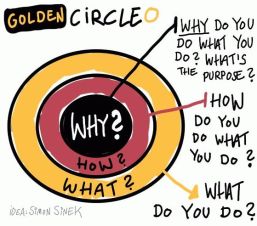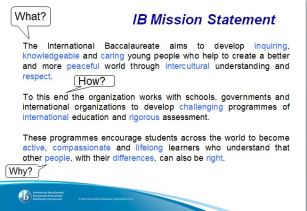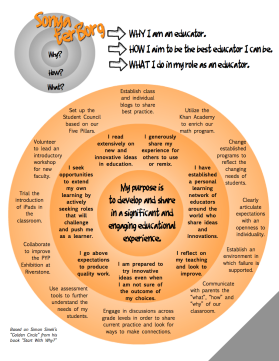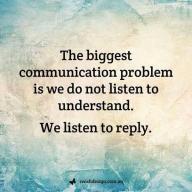Jennifer Le Varge (@VargeLe) asked me to skype in and chat to her participants in her PYP workshop for Pedagogical Leadership. She asked if I would share my ‘top 5 tips for being a TRUE Pedagogical leader’ and her aim was to create some cognitive discourse among participants.
I immediately said “yes!” but then had that usual seed of doubt mixed with panic. Do I even have 5 ‘top tips’ ? If so, what and how could I possibly best share?
A busy week for me in the Southern Hemisphere, as schools are preparing for the beginning of the new academic year, and I had two workshops to present, and in the same week, so beautifully planned by that thing called life, was the complete pack up and moving of house for a family of 4.
They say some of our best ideas happens when we are in the zone of automaticity – whether it be chopping vegetables, in the shower, or in my case, packing boxes – I found myself reflecting on what to share with Jen’s participants.
Although, there are many thoughts, and reflections of lessons learned, these were my ‘5 top tips’:
#1 : Always focus on the WHY.
 Simon Sinek, described on his own website www.startwithwhy.com as “a visionary thinker with a rare intellect,” Sinek teaches leaders and organizations how to inspire people. With a bold goal to help build a world in which the vast majority of people go home everyday feeling fulfilled by their work, Sinek is leading a movement to inspire people to do the things that inspire them.and his book the Start with Why and the idea of the Golden Circle.
Simon Sinek, described on his own website www.startwithwhy.com as “a visionary thinker with a rare intellect,” Sinek teaches leaders and organizations how to inspire people. With a bold goal to help build a world in which the vast majority of people go home everyday feeling fulfilled by their work, Sinek is leading a movement to inspire people to do the things that inspire them.and his book the Start with Why and the idea of the Golden Circle.

Simon has some great TED talks, and his books, although corporate focused, rather than education focused, are relevant and very easy to read and to assimilate. His research led him to the conclusion that successful corporations start with the ‘Why’ and he introduced the Golden Circle – (Why we do it, How we do it, and What we do).
I have found Simon’s work extends to both professional and personal goals, teacher development and understanding, and pedagogical practices. If we first take time to understand the ‘Why‘ we can than move on to the how and what and maybe even extend a plan for who, where and when. People don’t buy what you do, they buy why you do it.
( Simon Sinek)

The IB, themselves, have developed their mission statement under these three headings, which helps to give all those in the IB world a little more direction and clarification as to the Why
 Sonya terBorg, (sonyaterborg.com and @terSonya) took Simon’s research and thinking and developed her own golden circle sharing as to why she is an educator.
Sonya terBorg, (sonyaterborg.com and @terSonya) took Simon’s research and thinking and developed her own golden circle sharing as to why she is an educator.
I encourage all educators, not just pedagogical leaders, to review their job descriptions and their different roles in their schools, and reflect on the ‘Why‘.
I have found this reflection provides not just some deep soul searching through analysis and evaluation but also gives clarification and direction to all those involved.
In the past we have shared our Golden Circle with teaching teams and compared to the teaching teams’ expectations of your role. If both you and your team better understand your ‘Why’ as pedagogical leader and build a solid foundation of understanding, then conversations to develop essential agreements on the How and the What can be more easily facilitated.
#2 Be Visible
Moving in a pedagogical leadership role, often means paperwork and administration, sometimes a desk and a separate office.
As an instructional leader it is paramount that you remain visible in your learning community, that you continue to be in classrooms, that you are involved with the children and connected to (or even participate in) the teaching and learning, and that you are cognizant of happenings within your school. Get out from behind the desk!
On my own journey, this was one of the hardest things for me to to accomplish. As you can read in my earlier blog posts, I’d often got lost in the paperwork, lost track of my purpose (my ‘Why‘) and that my role as Instructional leader was to support the people in our learning community, and develop and support the teaching and learning practices in classrooms. Paperwork was just a tiny part of what I did.
 At this time of turmoil and learning, I discovered Justin Baeder (@eduleadership) and The Principal Learning Centre., and every year since, both myself and my pedagogical team members have taken on his 21 day Instructional Leadership challenge.
At this time of turmoil and learning, I discovered Justin Baeder (@eduleadership) and The Principal Learning Centre., and every year since, both myself and my pedagogical team members have taken on his 21 day Instructional Leadership challenge.
Justin’s challenge is built on the premise that it takes 21 days to form a habit, and once you’ve signed up on his website (p.s. It’s free!) you and your team are given a daily challenge that encourage you to get into classrooms, be visible, provide feedback for your teaching teams and develop effective practices.
Completing the challenge as a team has kept us all accountable, focused us all on the ‘Why‘, and helped to develop great habits within the team, whilst keeping us connected and visible within our learning community.
Justin also hosts a great podcast – Principal Centre Radio that has lots of wonderful resources, interviews and support networks.
#3 Listen to Understand.
I’ve previously blogged about the power of listening to understand rather than listening to reply. As a pedagogical leader, it is so important to continue to develop this skill and apply it to team meetings, one to one conversations, and instructional sessions.

As we ask teachers to take the time to get to know their learners, pedagogical leaders need to take time to know the members of their learning community. So, leave the ego at the door, focus on your team and listen to understand who they are as people first, as professionals second, and develop a positive working relationship.
There was a recent share on Facebook from Andy Homden and the International Teaching Magazine on How to Improve your Listening Skills. Some great guidance and tips, and well worth a read.
In order to build a school culture of listening to understand, I encourage schools to explore the use of protocols for meetings and team development.There are a number of publications written to support cognitive coaching, developing active listening skills and building a reflective learning community that is focused on effective teaching and learning practices. (see below)
Jenny Edwards, PhD, has developed a paper titled: Cognitive Coaching: A Synthesis Of The Research ( 2016) which you may find interesting to review as it is a very solid summary of recent research on cognitive coaching.
Kim Cofino (@mscofino) has blogged about the process that NIST took under the guidance of Tosca Killoran (Tosca Killoran) and Brian Duffy (@brianthebfd) whilst they explored the process of co-constructing a coaching protocol in her school. and definitely worth a read.
#4 Connect
One of my biggest shocks as I stepped into the role of pedagogical leader was how lonely it was. I’d been warned, but still, it came as a big cold, almost heartbreaking shock. Suddenly I was part of ‘them’.
True, it can be lonely, especially if you stay at that desk, which is another reason that being visible is so important. As discussed earlier, you need to get into classrooms and establish yourself as ‘part of the furniture’. Being visible is one way to stay connected to what is happening in classrooms, in corridors, at bus time and in the playgrounds. Stay connected to the people and the ‘Why‘ you are in this role.
Other ways to connect include, staying up to date with research and with new ideas and thinking in the education world. Stay connected – read books, blogs, websites, news feeds, talk, discuss, and join networks, educational and others and create working relationships and connections to other schools in your area (PYP Networks are THE best! ![]() ) and continue to learn, think, question and learn again.
) and continue to learn, think, question and learn again.
Stay connected to the outside world. Ensure you are aware of world events and happenings, with new technologies, with politics, music, film and the arts. As an instructional leader, and one supporting classroom learning, part of the role is to provide resources, ideas, research and provocations that connect to the classroom teaching – so stay connected.
Connect via social media. Your tribe is your outside line, your support . Jennifer and I have never met in person, but consider each other as friends and often share professional ideas and thoughts. Craig Kemp, (@mrkempnz) is another twitter contact who I am going to meet this week in person, after 5 years of Twitter (Yay!) . I am blessed to have these connections, but it took time and work and a concerted effort to build.
Twitter was my angel in the early days in Shanghai behind the firewall in isolation from the western world. Twitter allowed me to connect to professionals, develop my tribe, seek help and assistance and to question. It allowed me to connect.
Connection is wonderful, but of little value if you do not share. As a pedagogical leader, it is important to share, its part of your support role, we learn through sharing; of resources, thoughts, research, ideas, links and connections.
#5 (& 6) Believe & Be Brave.
There is something very real called the “imposter syndrome’ which describes someone who has experienced career success, and has substantial evidence to support the fact they are a capable and successful professional, but yet continues to feel like they are undeserving of the rewards and under qualified or inexperienced for the job they are in.

The imposter syndrome is that self-critic, that underlying doubt in yourself and your abilities, and possibly goes a little hand in hand with ‘that guy’ stuck behind their desk, and feeling a little lonely.
Someone, possibly even a committee of people, worked very long and hard to ensure the right person was hired for your position, and now you have your name on the door, you have a responsibility to live up to their expectations. They have faith in you and your abilities – and with the risk of sounding something like a Disney movie, I would urge you to believe.
Your role as a pedagogical leader, includes mentoring, supporting and coaching teachers and teams who rely on you, so stand tall, take a dose of self-confidence, and believe.
That is not to say there will be tears, and frustrations and bad days – but having belief in yourself, your connections, being visible and active in the community and understanding your ‘Why‘ will make it so much easier to move on.
Finally, the last word ( I know Jen asked for 5 – but I couldn’t help myself!) Be Brave.
 Education is in the middle of an exciting time, we are questioning, pushing, knocking down walls (literally) and challenging traditions and that most hated beast the TTWWADI.
Education is in the middle of an exciting time, we are questioning, pushing, knocking down walls (literally) and challenging traditions and that most hated beast the TTWWADI.
So be BRAVE! Go for it, reflect and learn from your mistakes, celebrate successes and have a go!
Good Luck to all those in their journey – and remember you are never alone.
These are my 5 tips to share, what would yours be?
I’d love to connect and hear your thoughts.
Further Resources and Links
Publications and books by Bill & Ochan Powell
Next Frontier – Inclusion in Schools
Reflections on Cognitive Coaching – Garmston
Cognitive Coaching and Thinking Collaborative
Unlocking Group Potential to Improve Schools

Pingback: Approaching Teaching: Week of March 2, 2019 | Approaching Teaching @ AISK